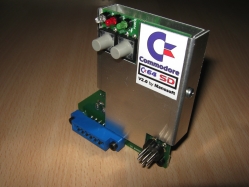
Autopsy:
Preview of the new Manosoft C64SD Infinity v2.0.
This project is interesting not only because it’s another mass-storage solution but because it combines already existing solutions to a new and fresh product. Damiano has always followed all the Commdore related websites and forums especially concerning the MMC and SD2IEC projects.
That’s when he got the idea to build a solution for which one doesn’t need soldering, wire cutting or the IEC cable. C64SD utilizes the Datasette pass-through connector to power the SD2IEC circuit. An IEC pass-through connector connects right into the IEC port.
The whole module stand vertical along the back of the C64/128 (or VIC20). The module is fitted with two rather large buttons, one reset and one diskswap/multi-function button.
Remember: with a external power supply the C64SD works fine with Commodore 16/Plus4.
C64SD Infinity new Features:
- TAPE pass-through connector.
- Reset on User Port.
- CPU Type ATMEL ATmega 1284P(128k)
- SD Filesystem for firmware upgrade FAT16/32
- Standard Commodore 128 IEC Cable.
The interface can be purchased on the Manosoft site.
source: manosoft.it youtube.com
Retro Innovations ROM-el:
To program the ROM-el chip by Retro Innovations you need a Adapter. The ROM-el chip uses a Atmel flashrom AT49F001AN (128K x 8) and we must build an adapter that converts the pins of the 2364 PROM Commodore 64 Kernel, which is used in ROM-el chip, to the original state of the chip AT49F001.
After this work, you can use the Willem programmer to program the FlashROM with one or more C64 kernel.
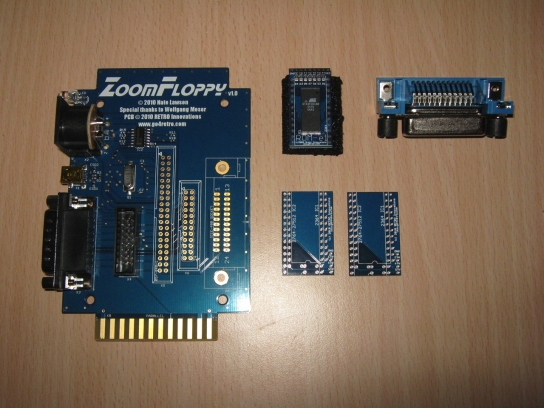
Autopsy:
ZoomFloppy is an USB device for connecting Commodore disk drives to your PC. The ZoomFloppy is an improvement based on XU1541 from Till Harbaum.
Nate Lawson and Jim Brain teamed up to produce a professional product. This controller will support IEC drives, IEEE-488 drives and a user-port connection for parallel.
source: go4retro.com ieee488 beta software docs & firmware
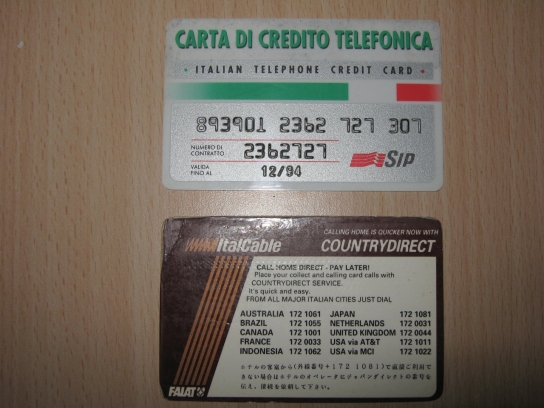
This is a old Italian Telephone Credit Card by SIP (Società Italiana per L’Esercizio delle Telecomunicazioni p.a.) now Telecom Italia and a Itacable Countrydirect card.
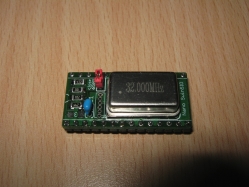
Nano SwinSID Prototype by x1541:
This project is based on the microcontroller ATMEGA88PU from Atmel and the emulation code is written by Swinkels.
The prototype of Nano SwindSID is a scaled down version of the Micro SwinSID, so far so good, and here’s my initial impression.
x1541, a user of the forum64.de has made a very nice work, the pcb has the same size of the original SID chip (6581/8580), the components are arranged very well and the entire space of the pcb was used. I can just say to buy it when the Nano SwinSID kit will be available, your money will be spent well.
Nano SwinSID Features:
- ISP Connector.
- Same size as the original SID.
- 6581/8580 Jumper.
- Smd ATmega.
source: forum64.de
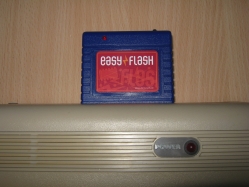
Autopsy:
Personal note (PLA Compatibility): I have tested the EasyFlash cartridge with a Commodore 64 with installed a PLA replacement by Manosoft and it works Perfectly!
I bought mine fully assembled from Mike Betz via Lemon64 Forums.
EasyFlash is a cartridge for the C64 expansion port. In contrast to traditional cartridges, this one can be programmed directly from the C64.
You can easily create various classic computer game cartridges, program collections or even a diagnostic cartridge to track down issues with your hardware with it. All what you need to do this is a C64, an EasyFlash, the software available here and an image of the cartridge (*.crt). As these CRT files may be quite large, a large disk drive like the FD-2000 or an sd2iec may be useful.
EasyFlash is not a freezer cartridge like the Final Cartridge III or the Retro Replay. And it’s no replacement for a 1541 disk drive like the sd2iec.
source: skoe.de/easyflash lemon64.com
This is a very old project published in a Dutch magazine to capture the state of the IRQ for Commodore 64 (vic-20) with a LED. After many years i have decided to make it.
On the photo you can see the project and the right connections on the cartridge port.
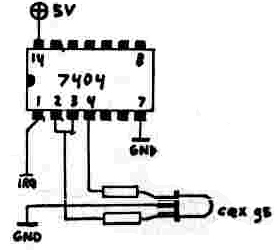 Components:
Components:
- 1 x IC 74LS04.
- 1 x Bicolor LED.
- 2 x 330 ohm resistors.
- Tiny wires.
How it work?
When the CPU generates an IRQ the green LED lights up, otherwise is red, if the irq is turned on and off quickly the led is orange.
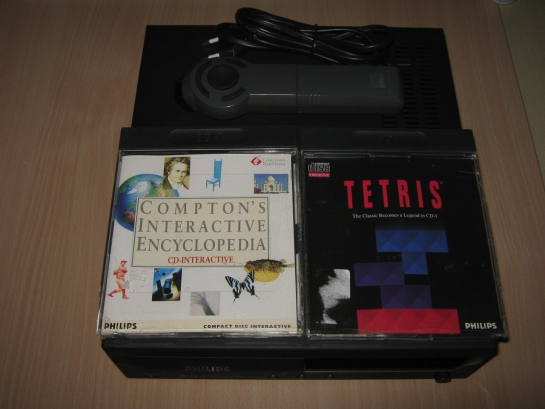
Autopsy:
from Wikipedia:
CD-i, or Compact Disc Interactive, is the name of an interactive multimedia CD player developed and marketed by Royal Philips Electronics N.V. CD-i also refers to the multimedia Compact Disc standard used by the CD-i console, also known as Green Book, which was developed by Philips and Sony (not to be confused with MMCD, the pre-DVD format also co-developed by Philips and Sony).
Work on the CD-i began in 1984 and it was first publicly announced in 1986.[2] The first Philips CD-i player, released in 1991 and initially priced around USD $700,[3] is capable of playing interactive CD-i discs, Audio CDs, CD+G (CD+Graphics), Karaoke CDs, and Video CDs (VCDs), though the last requires an optional “Digital Video Card” to provide MPEG-1 decoding.
Games ISO Download: gametronik.com
source: wikipedia
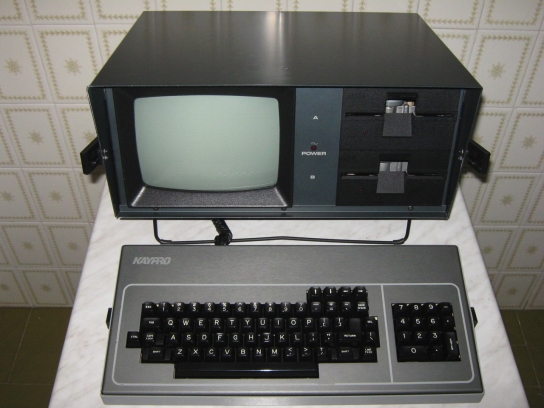
Autopsy:
from Wikipedia:
Kaypro Corporation, commonly called Kaypro, was an American home/personal computer manufacturer of the 1980s. The company was founded by Non-Linear Systems to develop computers to compete with the then-popular Osborne 1 portable microcomputer. Kaypro produced a line of rugged, portable CP/M-based computers sold with an extensive software bundle which supplanted its competitor and quickly became one of the top selling personal computer lines of the early 1980s.
While exceptionally loyal to its original consumer base, Kaypro was slow to adapt to the changing computer market and the advent of IBM PC compatible technology. It faded from the mainstream before the end of the decade and was eventually forced into filing for bankruptcy in 1992.
Software download: retroarchive.org mrynet.com seasip.demon.co.uk classiccmp.org kayplus romset
source: wikipedia
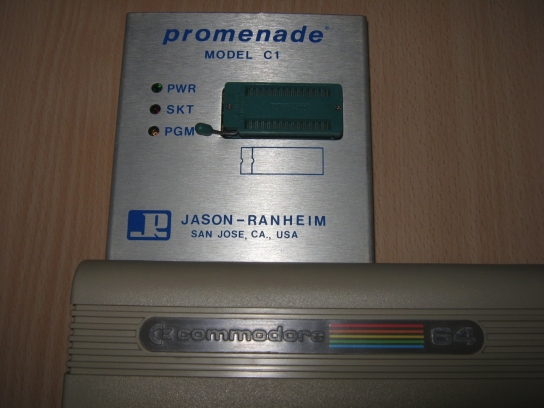
Autopsy:
The Promenade C1 is an EPROM burner that was manufactured in Canada by Jason-Ranheim Co. It plugs into the user port of computers like the Commodore VIC-20 or Commodore 64.
Download: Prom-Shell v2.00 (672)
source: mikenaberezny.com
I continue to upgrade my Amiga 2000 PAL REV 4.5. After the upgrade of the chip Fat Agnus and the Kickstart/4MB, today i have replaced the Denise chip with a new one. The Super Denise chip is capable of still higher resolutions and bit depths.
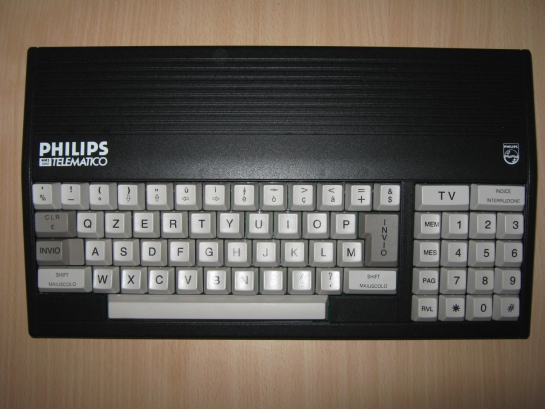
Autopsy:
The Philips NMS-3000 and 4000 are two video terminals dedicated to the Italian Videotel network, a precursor to the Internet which enabled each Italian family to access large databases as well as sending messages to one another.
source: wikipedia
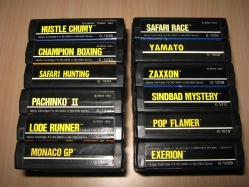
Autopsy:
Hello everyone, after the Fabio D. Bovelacci donation, i have decided to looking around for some cartridges for my Sega SC-3000. As you can see! i have found something.
The games cartridges are Japanese, but it works perfectly with my Sega SC-3000 PAL version.
Sega SC-3000 games cartridges (JAP):
- Safari Race
- Monaco GP
- Zaxxon
- Safari Hunting
- Sinbad Mystery
- Yamato
- Pop Flamer
- Pachinko II
- Lode Runner
- Hustle Chumy
- Exerion
- Champion Boxing
source: sc-3000.com
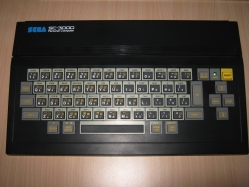
Autopsy:
Many thanks to Fabio D. Bovelacci for his donation. This is my second computer (ZX-81 is the first one), i spent a significant portion of my childhood in front of this one.
from old-computers.com homepage:
The SC-3000 is a computer based on the hardware of the first videogame systems released by Sega in Japan : the SG-1000 series. It can use the same game cartridges marketed for these consoles.
The SC3000 can’t be used without a ROM cartridge, which can be either a game or language. There were three different BASIC cartridges. One came with only 1Kb of RAM (and you had only 512 bytes free !), the second with 16Kb and the last with 32Kb. In official adverts, they show a total RAM of 48Kb. This was counting the VRAM and the 32Kb BASIC cartridge…
Several great games were adapted by Sega for this computer. Several graphic characteristics of the SC-3000 are fairly close to MSX ones. For example, it was one of the first computers to offer 32 sprites. Some months later, Sega released the SC-3000 H which was the same system but with a mechanical keyboard.
This computer was also marketed by Yeno under the same name (Yeno SC 3000 & SC 3000H). It was exactly the same computer except for the Yeno brand…
source: old-computers.com sc-3000.com
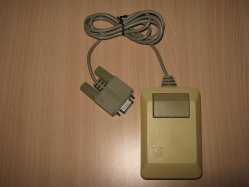
Autopsy:
Many thanks to Nilo for the Apple IIc Mouse.
Apple Inc. is responsible for the mouse interface standard used by today’s computers.
Apple did not invent the mouse, but just like Apple’s popularization of the graphical operating system, the company made the mouse a fundamental part of the personal computer. The Apple mouse has been evolving since the early days of Lisa and Apple II.



















































 Components:
Components:





































































































Recent Comments